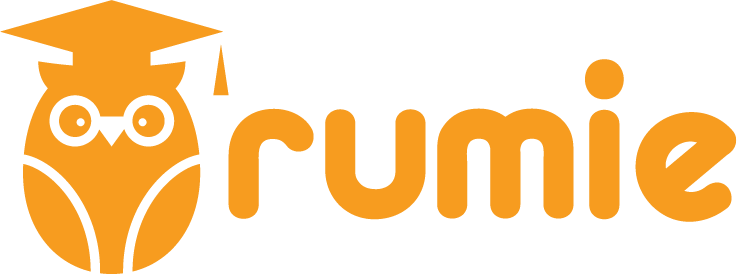
This logo isn't an ad or affiliate link. It's an organization that shares in our mission, and empowered the authors to share their insights in Byte form.
Rumie vets Bytes for compliance with our
Standards.
The organization is responsible for the completeness and reliability of the content.
Learn more
about how Rumie works with partners.
You're hard at work on your research! So far, you've:
got a research question ✅
checked out what others have done on this topic ✅
Now, it’s time to bring your research to life by choosing the right research design approach. This is essential to answering your research question effectively.

1. Qualitative Research Design: Getting to the Heart of the Story
When to use it:
You’re exploring new ideas or need to understand personal experiences and emotions.
You want to gather detailed, in-depth information rather than just numbers.
You’re studying a topic where context, behaviors, or social interactions matter.

Choosing the right qualitative research design depends on what you're trying to uncover. Here are six common approaches — see which one fits your study best:
Narrative: Exploring someone's life story and changes over time.
Phenomenological: Understanding an experience by directly talking to people.
Grounded theory: Developing a theory based on research findings.
Ethnography: Immersing in a group’s culture to understand their way of life.
Case studies: Analyzing a specific person, event, or situation in-depth.
Content analysis: Examining books, movies, or articles for patterns or themes.
 Photo by Christina @ wocintechchat.com on Unsplash
Photo by Christina @ wocintechchat.com on UnsplashQuiz
You want to understand the personal experiences and emotions of first-time remote workers adjusting to their new work environment. Which qualitative research design is the best choice?
Phenomenology is the best choice because it focuses on exploring lived experiences through direct interaction. Narrative research design looks at life stories over time, ethnography studies group behaviors, and content analysis examines written materials rather than personal experiences.
How To Use Qualitative Research Design
Choose the method that best fits your study, then collect the data:
Interviews: Ask open-ended questions to gather detailed, personal answers.
Observations: Observe people in natural settings (e.g., work environments or public spaces) and take notes.
Case studies: Focus on a particular individual or group to gain deeper insights into their experience.
Analyze your data by identifying patterns, themes, and recurring ideas to understand the bigger picture beyond just numbers.

Qualitative Research Design Example
If you're studying how first-time remote workers adjust to their new work environment, you might conduct interviews where participants share their emotions, struggles, and successes.
After gathering their responses, you would look for common themes — like feelings of isolation, changes in work-life balance, or strategies that helped them adapt.
 Photo by UX Indonesia on Unsplash
Photo by UX Indonesia on Unsplash2. Quantitative Research Design: Numbers & Stats for Clarity
When to use it:
You need measurable data to identify trends or cause-and-effect relationships.
You want to make generalizations based on a large sample.

Here are some common quantitative research design approaches — see which one aligns with your study:
Survey research: Asking a group of people the same questions to gather a large amount of data.
Descriptive research: Describing a situation or condition as it is right now.
Experimental research: Testing to see how one thing affects another under controlled conditions.
Correlational research: Looking at the relationship between two things (but not proving cause and effect).
Causal-comparative Research: Trying to figure out if one thing causes another.

Quiz
A researcher wants to measure whether flexible work hours improve employee productivity in a tech company. Which quantitative research method is the best choice?
Experimental research design is the best choice because it tests cause and effect by manipulating flexible work hours and measuring their impact on productivity. Survey research collects opinions or self-reported data, correlational research examines relationships without proving causation, and descriptive research only describes trends without testing influence.
How To Use Quantitative Research Design
Choose the method that best fits your study, then collect the data:
Surveys: Ask closed-ended questions to collect data from a large group (e.g., “How many hours per week do you work from home?”).
Experiments: Test cause and effect by dividing participants into control and experimental groups (e.g., testing if flexible hours increase productivity).
Descriptive studies: Observe and document a situation or phenomenon as it is (e.g., measuring how many people work remotely).
Analyze your data using statistical tools like averages, percentages, or correlations to reveal trends and relationships.

Quantitative Research Design Example
If you're researching whether flexible work hours improve employee productivity in a tech company, you might conduct an experiment where half of the employees follow flexible schedules while the other half work fixed hours.
After a set period, you would compare productivity metrics — such as tasks completed or performance reviews — to see if those with flexible hours show higher productivity.
 Photo by Lukas Blazek on Unsplash
Photo by Lukas Blazek on UnsplashDid you know?
You can use software like Excel, SPSS, or Google Sheets to organize and calculate your findings.
3. Mixed Methods Research Design: The Best of Both Worlds
Sometimes, stories AND numbers are needed to fully understand a topic. That's where mixed methods research design comes in — you combine qualitative and quantitative research to get a more complete view of things.
Types of Mixed Methods Research Design:
Sequential explanatory: Start with the numbers (quantitative), then follow up with interviews to understand the story behind them (qualitative).
Sequential exploratory: Begin with interviews to explore ideas (qualitative), then use a survey to confirm findings (quantitative).
Sequential transformative: Collect data in two phases — starting with either numbers or stories — guided by a specific framework, such as a social, psychological, or educational theory.
Concurrent triangulation: Collect numbers and stories at the same time to compare and strengthen your results.
Concurrent embedded: Focus on one method, but use the other to add extra details or support.
Concurrent transformative: Collect both types of data at the same time, using a specific framework or perspective to interpret the findings.

Take Action

Now that you understand the different research designs, it's time to decide which one is the best fit for your study. Consider these key points to guide your decision-making process:
This Byte has been authored by
Liat Liberman
Content Designer
MA